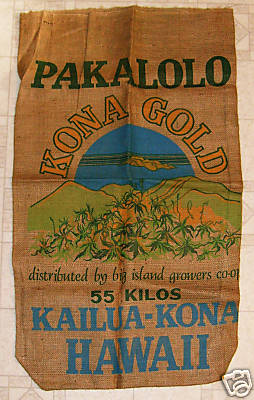Well that does seem to settle the question of who ‘made’ your frame, although I personally think the difference between a frame welded in the US and one welded in Taiwan is minimal actually - and the main distinguishing feature of a Hot is the paint, which was the only thing that was truly ‘custom’.
It seems as though the Mountain Goat operation morphed into Altitude Cycles, which existed just for 1996, but then William Jefferson Lindsay went back to glass work. The reasons why are unclear. He says glass was more exciting, but presumably Altitude wasn’t any more of an economic success for him than MG had been. Whether Kona took the work away from him or he gave it up is probably something lost in the mists of time, but I’m still intrigued by the reference from mtbr to Altitude being a bunch of stoners and the frames not being straight enough.
There was another mtbr thread about the pros and cons of Taiwan vs US-built, to which Ted Wojcik contributed interestingly. If anyone thinks that if a frame isn’t straight then the builder was stoned (or careless for some other reason), I doubt that would apply to Altitude. Every builder aligns the tubes very carefully, but the temperatures involved in TIG welding inevitably cause distortion. High-cost US builders may do more checking between the different stages of the process, but even so a degree of cold setting is needed to correct variations. Reynolds 853 was brand new on the market in 1996 and nobody had any experience of it. Wojcik makes the point that the very ‘air hardening’ properties that make 853 attractive also make cold setting almost impossible. So maybe it turned out that the only way to make a straight frame with 853 and similar materials is to anticipate the distortions when you're setting up the alignment, rather than depend on correcting them afterwards. And you only learn that with experience. But hey, calling them a bunch of stoners is quicker, right?
I still say the added value is mainly in the paint.
It seems as though the Mountain Goat operation morphed into Altitude Cycles, which existed just for 1996, but then William Jefferson Lindsay went back to glass work. The reasons why are unclear. He says glass was more exciting, but presumably Altitude wasn’t any more of an economic success for him than MG had been. Whether Kona took the work away from him or he gave it up is probably something lost in the mists of time, but I’m still intrigued by the reference from mtbr to Altitude being a bunch of stoners and the frames not being straight enough.
There was another mtbr thread about the pros and cons of Taiwan vs US-built, to which Ted Wojcik contributed interestingly. If anyone thinks that if a frame isn’t straight then the builder was stoned (or careless for some other reason), I doubt that would apply to Altitude. Every builder aligns the tubes very carefully, but the temperatures involved in TIG welding inevitably cause distortion. High-cost US builders may do more checking between the different stages of the process, but even so a degree of cold setting is needed to correct variations. Reynolds 853 was brand new on the market in 1996 and nobody had any experience of it. Wojcik makes the point that the very ‘air hardening’ properties that make 853 attractive also make cold setting almost impossible. So maybe it turned out that the only way to make a straight frame with 853 and similar materials is to anticipate the distortions when you're setting up the alignment, rather than depend on correcting them afterwards. And you only learn that with experience. But hey, calling them a bunch of stoners is quicker, right?
I still say the added value is mainly in the paint.
